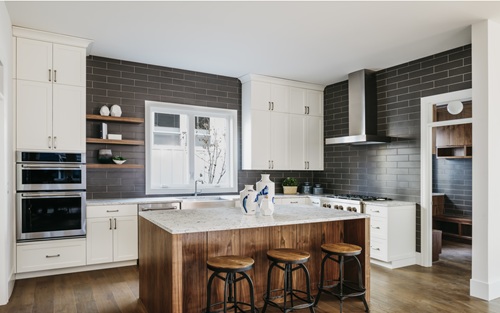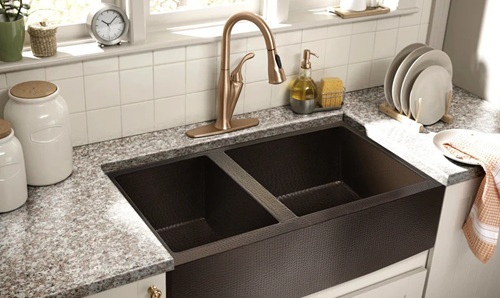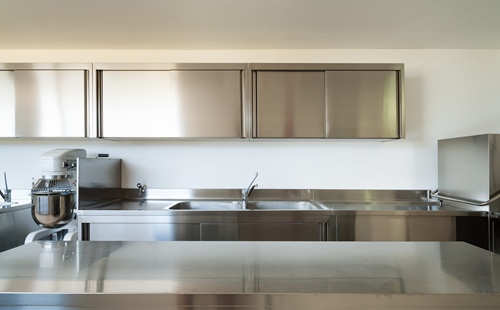The kitchen is often called the heart of the home—a space where functionality meets style. When it comes to choosing the right flooring for your kitchen, wood floors have become an increasingly popular choice. Their natural beauty, warmth, and timeless elegance make them a favorite for both traditional and modern interiors.
But installing wood flooring in a high-traffic, moisture-prone area like the kitchen comes with unique challenges. Let’s explore the pros and cons of wood floors in the kitchen, providing a practical and balanced view to help you decide if this flooring material is the right fit for your culinary space.

🪵 What Are Wood Floors?
Wood floors are made from natural hardwood such as oak, maple, hickory, walnut, or engineered wood, which consists of a veneer of hardwood over layers of plywood. These floors are available in various finishes (matte, satin, glossy), colors, and plank sizes to match your kitchen’s aesthetic.
You can choose between:
- Solid Hardwood Flooring: Made from a single piece of wood, can be sanded and refinished multiple times.
- Engineered Wood Flooring: Made from a top layer of hardwood and plywood layers beneath. More stable in humid conditions.
✅ Pros of Wood Floors in the Kitchen
1. Timeless Beauty and Warmth
Wood flooring brings a natural warmth and elegance that few other materials can match. Its rich grain, organic texture, and wide color range create a welcoming environment that suits any kitchen style—from farmhouse to Scandinavian to contemporary.
Design Tip: Lighter wood tones make kitchens feel more spacious and bright, while darker stains add depth and contrast.
2. Comfort Underfoot
Unlike tile or stone, wood flooring feels softer and warmer underfoot, which is a big plus if you spend a lot of time standing while cooking. It’s also more forgiving on your feet, knees, and back during long prep sessions.
Bonus: Wood doesn’t get as cold in the winter as ceramic or porcelain tile.
3. Increases Home Value
Homes with hardwood flooring—especially in the kitchen—are often more desirable to buyers. A well-maintained wood floor can increase resale value and appeal due to its luxurious and long-lasting nature.
Fact Check: According to Realtor.com, hardwood floors can add up to 2.5% to the selling price of a home.
4. Durability and Longevity
When properly maintained, hardwood flooring can last for decades. Solid hardwood can be sanded and refinished multiple times, helping it recover from scratches, stains, or wear over time.
5. Seamless Aesthetic
Installing wood flooring in the kitchen can create a seamless look throughout open-concept homes. Using the same flooring in the living, dining, and kitchen areas enhances visual flow and makes the space feel larger.
6. Environmentally Friendly
Wood is a renewable resource, and many manufacturers now offer sustainably sourced hardwood certified by the Forest Stewardship Council (FSC). Engineered wood also uses less solid timber per plank, reducing environmental impact.
❌ Cons of Wood Floors in the Kitchen
1. Sensitive to Water and Moisture
Wood is highly susceptible to water damage. Spills, leaks, and humidity can cause it to warp, swell, or stain. This is especially risky in kitchens where water from sinks, dishwashers, and cooking is inevitable.
Pro Tip: Wipe up spills immediately and use rugs or mats near the sink and dishwasher to reduce risk.
2. Can Scratch and Dent Easily
Sharp objects, dropped utensils, pet claws, and even high heels can scratch or dent wood flooring. Kitchens with high foot traffic may show wear over time unless you use protective pads on furniture and stay vigilant about maintenance.
3. Requires Regular Maintenance
To keep wood floors looking their best, you’ll need to sweep frequently, use wood-friendly cleaners, and possibly refinish the surface every few years, especially in high-use areas like the kitchen.
4. Not Ideal for Busy Families or Pets
If you have young children or pets, the risk of spills, messes, and scratching increases. In such households, more durable flooring options like vinyl planks or porcelain tiles may offer better long-term performance.
5. Costlier Installation and Repairs
Hardwood flooring can be more expensive to install and repair than other materials. Water damage may require replacing entire planks, and professional refinishing adds to lifetime costs.
Price Range (India): ₹400 – ₹800 per sq. ft. (solid hardwood), ₹250 – ₹600 per sq. ft. (engineered wood)
Price Range (USA): $8 – $15 per sq. ft. (including installation)
⚖️ Comparison: Wood vs Other Kitchen Flooring Options
| Feature | Wood | Porcelain Tile | Vinyl Plank | Laminate |
| Water Resistance | Low | Excellent | Good | Moderate |
| Aesthetic Appeal | Excellent | Good | Good | Moderate |
| Comfort Underfoot | High | Low | High | Moderate |
| Durability | Moderate–High | Very High | Moderate–High | Moderate |
| Maintenance Needs | High | Low | Low | Low |
| Refinishable | Yes (solid wood) | No | No | No |
| Installation Cost | High | Moderate | Low | Low |
🛠️ Tips for Maintaining Wood Floors in the Kitchen
- Use Area Rugs: Place rugs in high-spill areas like the sink, stove, and dishwasher.
- Clean Spills Immediately: Water left for too long can warp the wood.
- Sweep Daily: Remove debris that can scratch the surface.
- Avoid Harsh Cleaners: Use pH-neutral, wood-safe cleaning products.
- Refinish Periodically: Sand and refinish to restore shine and remove surface damage every 5–10 years.
🏁 Are Wood Floors in the Kitchen Right for You?
✅ Choose Wood Flooring If:
- You value natural aesthetics and warmth.
- Your kitchen is part of an open-concept design.
- You’re willing to commit to routine care and occasional refinishing.
- You want to increase resale value and add a timeless touch to your home.
❌ Avoid Wood Flooring If:
- Your kitchen has high moisture levels or a history of leaks.
- You have children or pets that create frequent messes.
- You prefer a low-maintenance, water-resistant solution.
- You’re on a tight renovation budget.
🧾 Final Verdict
Wood flooring in the kitchen offers unmatched elegance, comfort, and continuity, especially in open layouts and upscale homes. However, it also comes with the responsibility of care—wood demands attention, particularly in high-risk moisture environments like the kitchen.
If you love the look and feel of natural wood and are prepared to protect and maintain it, hardwood floors can be a long-lasting, beautiful addition to your kitchen. But if you’re more focused on durability, water resistance, or easy upkeep, consider alternatives like engineered wood, luxury vinyl, or tile that mimic the look of wood with fewer maintenance demands.

